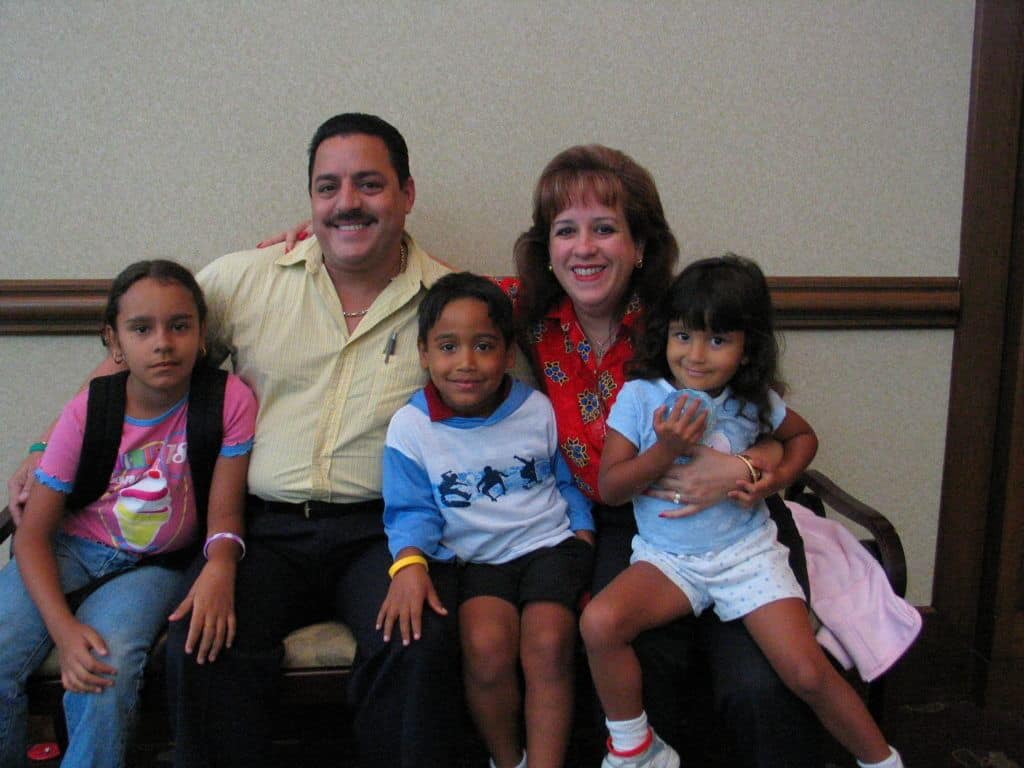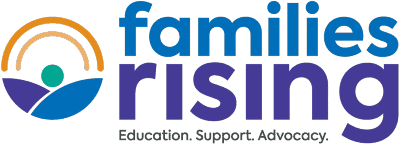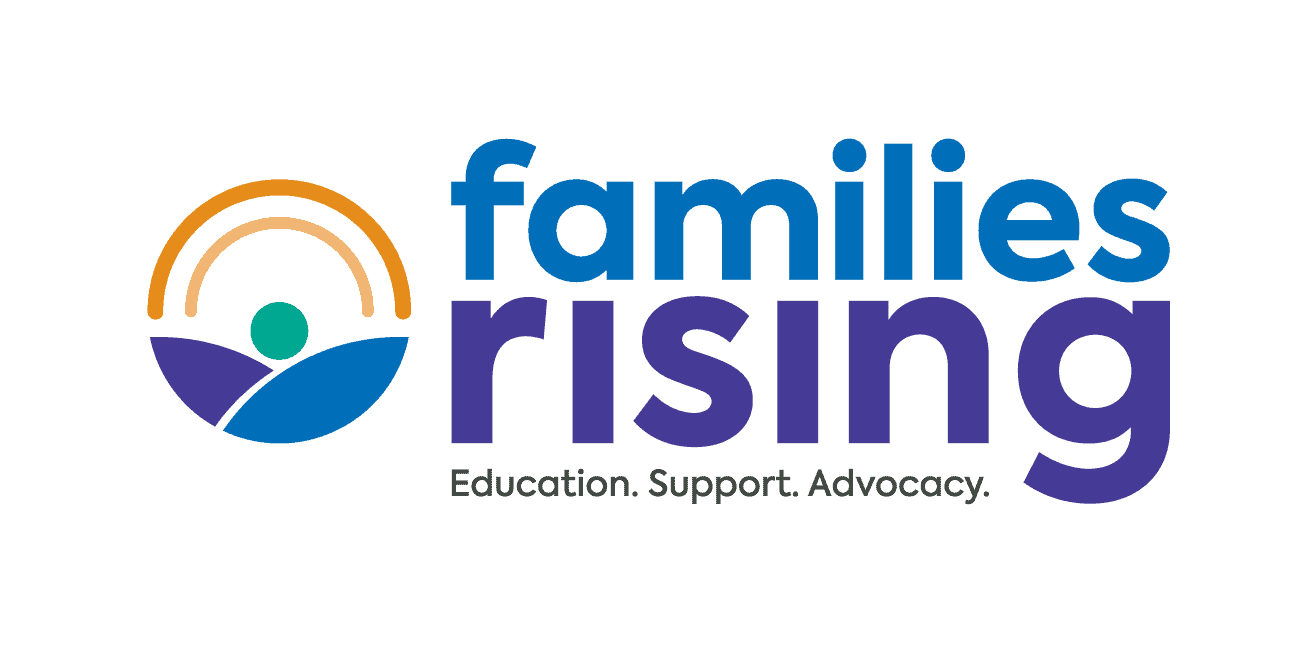by Stacy Manning
Stacy Manning is a registered nurse, post-adoption family coach, and educator. She and her husband are raising six teenagers, three adopted and three biological. In 2011, Stacy created Hope Connections, which provides family coaching sessions to current and prospective adoptive parents across the U.S., and offers workshops, sensory tools, and a hands-on learning system. In 2013, she wrote Adoptive Parent, Intentional Parent: A Formula for Building & Maintaining Your Child’s Safety Net. Learn more at http://www.tohavehope.com or email Stacy at stacy@tohavehope.com.

As a biological parent of three boys, I felt confident as a mom. I often said that when I died they could write on my headstone: “She was a good mom.” When my boys were 2, 3, and 5, we adopted three girls from Russia—also 2, 3, and 5. My life changed drastically; many days I no longer felt like that good mom. It became clear to me that to be a good adoptive mother I had to do things very differently. I wasn’t going to be able to rely on what worked before or parent the way I was raised.
Adopted children or those who have been in foster care have one thing in common—the loss of their original primary attachment. This huge loss creates many hurdles for children. It alters how they relate to the world and form relationships. Trauma, combined with the loss of a primary attachment figure, saddle some children with challenges. Many of these challenges can be invisible. Others are easier to see, including problematic behaviors, difficulties making friends and building relationships, and low self-esteem. These challenges are too often unexpected and misunderstood.
It is difficult to parent a child who has already lost a parent. The child’s fear of experiencing another loss and his beliefs about whether he deserves love, combined with the effects of trauma, makes being an adoptive or foster parent a whole new ball game.
New Rules for an Old Game
As adoptive and foster parents, we are most likely to succeed if we become intentional parents.
Intentional parents:
- Meet children where they are, physically and psychologically. Intentional parents must seek to know their child’s history and understand how abandonment and trauma shape children. They then make parenting choices based on that knowledge. The key to success is truly seeing the whole picture of the child.
- Parent differently than you thought you would. To give children a sense of safety, we need to start from emotional age 0, no matter how old they are. We need to protect their emotional safety, which can mean responding differently than we do with other children of the same age.
- Commit to parenting for as long as it takes. Children may have missed developmental steps, be behind in learning, or be less able to develop social skills and maintain relationships. Their emotional age often does not match their real age. They need and deserve as much time as it takes to catch up.
- Build a safety net for children. In a healthy biological family, an infant enters the world with a safety net based on her primary attachment. Children in foster care and adoption come with a net that is no longer intact. It is our job to create a safety system they can rely on. An effective net offers an unwavering assurance of the basic survival needs.
Intentional parents build and maintain the net by responding in a sensitive, caring, and consistent way to the child’s physical and psychological needs. This shows the child that we recognize and can meet his specific needs. By responding consistently and with care, we create and maintain an environment in which a child internalizes the belief that she is worthy of love, is capable of positively affecting the world, and has the potential to accomplish anything.
Create a Game Plan
With biological children, we can sometimes rely on similar thinking patterns or shared past history. In adoption or foster care, parents typically have to be more intentional to help children heal. So to create a strong safety net, we must have a game plan. And the plan must be created and facilitated by the adoptive or foster parents; they are their children’s best chance at healing.
The plan to build the safety net begins by creating the first row of knots—the foundation for the entire net. This first row includes providing for basic needs; making the child’s world smaller (introducing new people, places, things slowly, and limiting choices); parenting to the child’s emotional age; remaining neutral; understanding attachment styles; communicating; promoting exploration through sensory input; and taking care of yourself.
By following the healing formula below, parents can begin to create a plan to build each knot in the safety net:
- Look at your own stuff. We should understand our own expectations of adopting or fostering. Then we can identify when our “stuff” is getting in the way of helping our child heal. Are we whole without this adoption or are we trying to fulfill needs, wants, or old wounds? Is our self-worth defined by the quality of our relationship with our child? It is important to separate our struggles from our children’s. We need to claim our stuff, work through it, grieve what must be grieved, and then move it out of the way!
- Educate yourself. We must become a walking encyclopedia about our children and about children who have experienced trauma and loss. Intentional parents seek every bit of information available—as many details of our child’s story as we can find, the ins and outs of every diagnosis he has or could have, and information about the effects of trauma and loss. This is an ongoing effort as we learn more daily about the neurological and emotional effects of trauma and other challenges. Once we have information, we have to think about how it manifests itself in our children.
- Use tools and techniques that work. To create a strong row of knots in the safety net, we must use proven strategies to accomplish our goals, including tools we may not have used before. In the section that follows are some techniques for the first knot—to meet a child’s basic needs. Other specific tools are covered in the book Adoptive Parent, Intentional Parent. We can also learn effective tools and techniques from experienced foster and adoptive parents.
- Keep on keepin’ on. Intentional parents need fuel to keep going no matter the obstacles. We must find others who are walking our path. To be understood and accepted gives us strength to build and maintain our child’s safety net. Keepin’ on also means that we need to measure our progress with a new tool—one that gives us a clear, concise picture of where our children are. We also have to forgive—forgive ourselves as parents, forgive our support system, and forgive our children. This forgiveness allows us to start over when needed—every day, every hour, or every minute—intentionally allowing healing to happen. Of course, the most important thing to keep us going is hope.
The healing formula is not a series of steps followed from beginning to end. We are dealing with living, growing, and feeling children, so our plan has to live, grow, and feel as well. As our children reach new stages or have life changes, we evaluate where they are and make changes if needed. In the case of two-parent families, both parents must present a united front in implementing the plan. One can’t carry it out alone, while the other is on the sidelines. A division can cause children to question the safety net’s security.
Let’s Play Ball
Our children are survivors who have learned to live without a safety net. As a result, they will test any new net’s strength and the net builders’ conviction. To ensure the net is secure and passes these tests, its first row of knots must be tied strong and tight. The first knot in that row is providing for basic needs. As intentional parents, we must understand that when our children lost their primary attachment, they may have lost their assurance for those basic needs. Our most basic need is food. In the minds of our children, food equals survival. Thus, many of our children struggle with food issues.
Using the four steps in the healing formula above, let’s create a plan related to food:
- To look at our stuff, we consider our own issues with food, weight, and body image. We ask questions like, “Does the way my child looks define whether I am a good parent or not?” “Does my child’s overeating, undereating, or hoarding trigger my inadequacies or my past wounds?” “How are the standards of society affecting my reactions?” We must dig deep, face our stuff, get help working on it if need be, and then move it aside.
- Next, we find all the information we can about our children and food. We gather real accounts through social histories, case files, or court documentation, or deduce what we can based on knowledge of our child’s culture or other experiences. We learn how neglect affects a child’s physical and psychological development and can result in food insecurity. Then we make connections between our new knowledge and our child’s beliefs and choices. This knowledge will help us understand that our child’s difficult behaviors are the symptoms of emotional wounds, not defiant, purposeful choices.
- Now we need to find tools and techniques that convince our children that we can and will provide the food they need so they feel safe and worthy. Intentional parents employ tools and techniques like these:
- Keep a bowl of healthy food on the table at all times and allow them to eat it without issue. Do not let this bowl go empty.
- Never be in a position where you can’t meet their need. Always have food with you. Since hunger pangs can trigger fears and difficult behaviors in children, carry food on every trip and offer snacks regularly.
- While eating one meal, talk about what you are having for the next meal. Have a menu plan your children can see.
- Have breakfast ready on the table in the morning. Getting up early to make this happen will help decrease your child’s anxiety about whether she will be fed today.
- Include children in the task of putting away groceries. This experience helps emphasize that there is food in the home. Choose to be okay with a little chaos and disorder that may arise.
- Seat your child across from you at the table so he has the opportunity to connect you with the food you provided. Be aware of how your eyes appear, always striving for a soft and kind look.
- To keep on going with the plan, we need support. We surround ourselves with other foster or adoptive parents, committed friends and relatives, and others who can support the feeding plan. And when a food strategy doesn’t work, we must forgive ourselves and our children, try something else, and hang onto hope…always!
Using our plan, we’ve begun to weave the first knot in our strong safety net. We can continue to use the four steps of the formula to tie and maintain each knot of the safety net. We must strengthen the knots until our child comes to trust them—it is an ongoing process.
Home Run!
When we successfully use this formula to parent our children, we are a healing force! It is important to remember that we don’t have to be perfect; we just have to be intentional parents who consider our children’s histories and the effects of trauma.
Originally published in 2014


